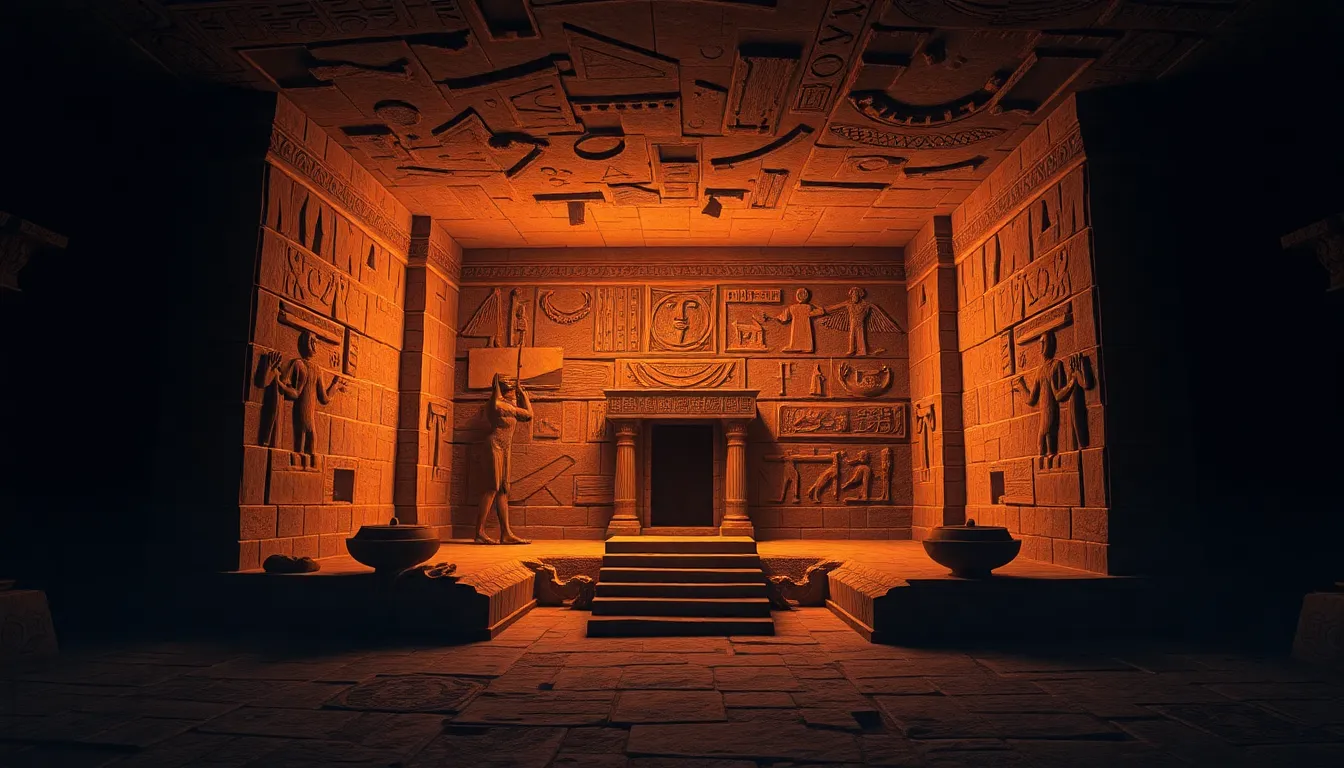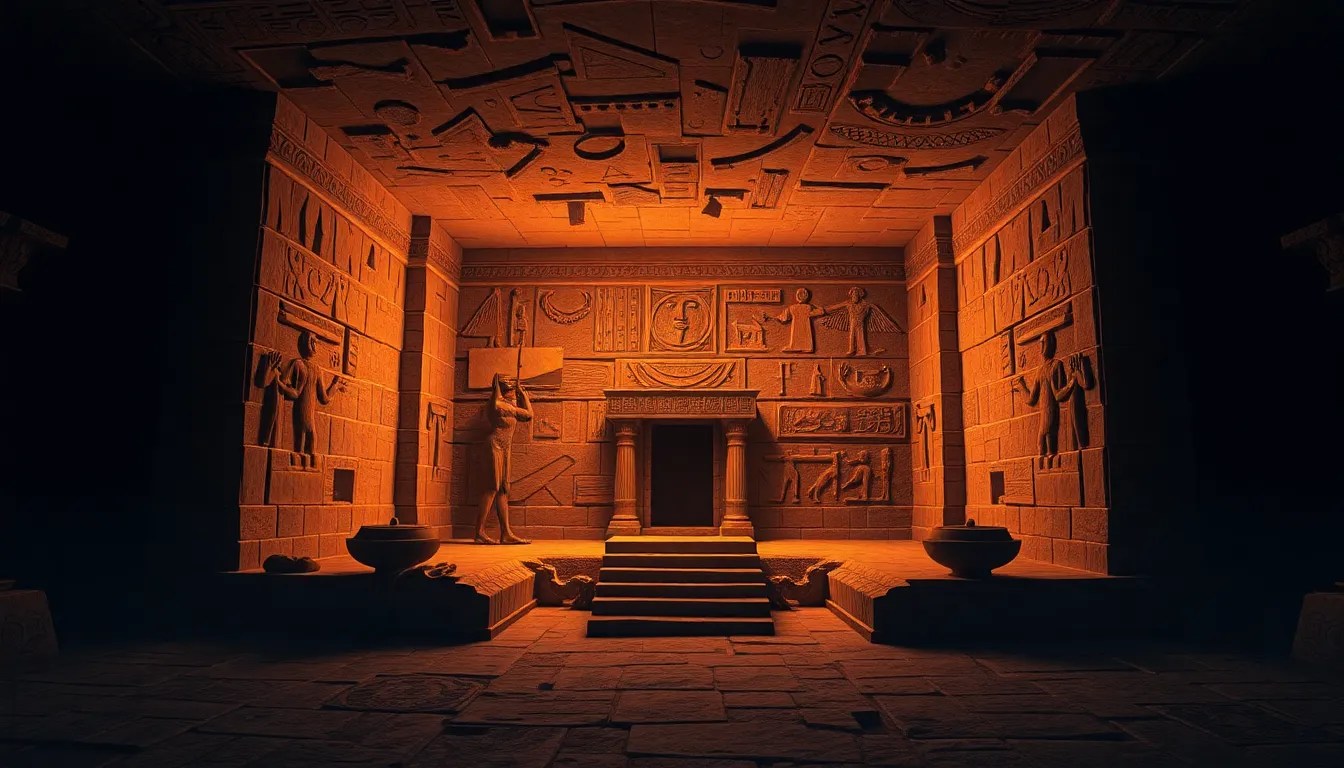The Importance of the Tomb in Securing the Afterlife
I. Introduction
The concept of the afterlife has been a pivotal aspect of various cultures throughout history. It shapes how societies view death, the transition into an unknown realm, and the enduring nature of the human spirit. In many ancient civilizations, the afterlife was not merely a continuation of existence but a journey that required careful preparation, often reflected in their burial practices.
Tombs played a crucial role in ensuring a safe passage to the afterlife. They served as eternal resting places, designed to protect the deceased and their belongings, as well as to facilitate their journey beyond the mortal realm. This article explores the significance of tombs across cultures, their architectural features, associated rituals, and their relevance in contemporary society.
II. Historical Significance of Tombs
From the intricate pyramids of Egypt to the burial mounds of ancient Europe, tomb-building practices have been a hallmark of human civilization.
- Ancient Civilizations: Various ancient cultures, including the Egyptians, Mesopotamians, and Chinese, constructed elaborate tombs that reflected their beliefs about the afterlife.
- Notable Tombs:
- The Great Pyramid of Giza
- The Terracotta Army in China
- Newgrange in Ireland
- Evolution of Tomb Design: Over time, tombs evolved from simple burial pits to grand structures adorned with art and inscriptions, signifying the importance of the deceased.
III. Cultural Beliefs and Afterlife Concepts
Beliefs about the afterlife vary significantly across cultures, influencing how tombs were constructed and what practices were followed during burials.
- Overview of Beliefs:
- The ancient Egyptians believed in a journey through the Duat (underworld) and the weighing of the heart against the feather of Ma’at.
- In many Indigenous cultures, the afterlife is seen as an extension of life on Earth, leading to practices that honor the deceased.
- Influence on Tomb Construction: Cultural beliefs directly influenced tomb architecture, with many tombs incorporating symbols and artifacts relevant to the deceased’s life and beliefs.
- Symbolism of Tombs: In various religions, tombs symbolize the transition from the physical world to the spiritual realm, serving as a connection between the living and the dead.
IV. Architectural Features of Tombs
Tombs are often characterized by specific architectural elements that reflect their purpose and the beliefs associated with them.
- Common Features:
- Chambers: Private spaces for the deceased.
- Entrances: Often sealed or designed to deter grave robbers.
- Inscriptions: Hieroglyphics or carvings that provide insight into the life and beliefs of the deceased.
- Significance of Materials: The choice of materials, ranging from stone to precious metals, often reflected the status and wealth of the individual, as well as the belief in their need for protection in the afterlife.
- Tomb Architecture and Afterlife: The design of a tomb often mirrored the architecture of temples or palaces, suggesting a belief in the continuity of life beyond death.
V. Rituals and Practices Associated with Tombs
Funerary rituals and practices are integral to the concept of the afterlife, serving as a means to honor and remember the deceased.
- Funerary Rituals: These rituals often include prayers, offerings, and ceremonies designed to guide the deceased in their journey to the afterlife.
- Offerings and Artifacts: Items such as food, jewelry, and personal belongings were placed in tombs to provide comfort and sustenance in the afterlife.
- Ceremonies and Memorials: Memorial services and commemorative events are held to honor the deceased, allowing the living to remember and celebrate their lives.
VI. Tombs in Modern Society
The perception of death and the afterlife continues to evolve, with contemporary views shaped by historical practices.
- Contemporary Views: Many modern societies retain a fascination with the afterlife, often influenced by religious beliefs and cultural traditions.
- Modern Burial Practices: Today’s burial practices often reflect a blend of ancient traditions and contemporary values, with some opting for eco-friendly burials.
- Relevance of Tombs: Tombs remain significant in cultural identity, serving as sites of memory and reflection for communities.
VII. Archaeological Discoveries and Their Impact
Archaeology plays a crucial role in uncovering the mysteries of tombs and their associated beliefs.
- Major Discoveries: Significant archaeological finds, such as the tomb of Tutankhamun, have provided insights into ancient beliefs about the afterlife and burial practices.
- Preserving Cultural Heritage: Archaeological efforts contribute to the preservation and understanding of cultural heritage, offering valuable lessons about humanity’s past.
- Ethical Considerations: The excavation of tombs raises ethical questions about respect for the dead and the cultures from which they originate.
VIII. Conclusion
Tombs have long been regarded as vital in securing the afterlife, reflecting the beliefs and values of cultures throughout history. They serve not only as final resting places but as symbols of the connection between this life and the next.
The enduring legacy of tombs continues to influence contemporary views on death and memory, reminding us of the importance of respecting cultural practices surrounding burial and the afterlife. As we reflect on these practices, we are called to appreciate the rich tapestry of human beliefs that shape our understanding of life, death, and what lies beyond.




